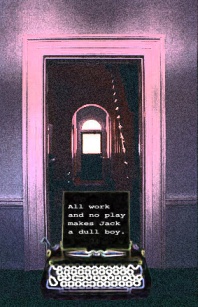
Bummer, dude
I heard back from C.C. Finlay, who’s guest editing an issue of the Magazine of Fantasy and Science Fiction (or F&SF, for short). Regular readers of this blog may remember when I posted about submitting a story for this issue. Charlie doesn’t plan to use my story this July/August. He liked it, but he didn’t love it. Actually, here’s his email, verbatim:
Thanks for submitting “Gathering for the Feast.” I enjoyed reading it — I like the setting, the history, the magic, and characters. But in the end it didn’t quite win me over — part of that was it felt just a bit too long to me for the amount of story in it. So I’m afraid I’m going to pass on it. Best of luck with finding another home for it, and thanks again for giving me a chance to read it. If I do this again I hope to see another story from you.
A friend of mine also submitted a story, and received a rejection. In the interests of ferreting out exactly how personal my rejection letter was, and how much it was form letter, I can report that both our rejections began and ended pretty much the same way. “Thank you for submitting [title].” appeared in both letters. So did the ending part: “Best of luck to you placing this one elsewhere, and thanks again for giving me a chance to read it. If I do this again I hope to see more stories from you.”
The part where I know he actually read my story, and my friend’s—or at least, he got decent evaluations of them from a careful reader—comes in between the form sections. My friend’s center section was different from mine. Not exactly a form letter, right? Anyway, I’ve decided to take it as encouragement. Why? Because I can!
So now I need to decide what to do next. There are two options I can see. The first would be to go back in and see if I can figure out where and how the story is too long. The second would be to just go ahead and submit it elsewhere.
Here’s the thing: if I didn’t have any other projects vying for my attention, I would probably go back in there. I might find something to improve, something that’s escaped me up to this point. However, I have at least two other works in need of revision. Also there’s the whole, “what if while I’m trying to fix it, I just make it worse?” question. You know how, when you’re having the beginnings of a bad hair day, and you keep futzing around with your hair, and by the time you’re done, it looks even worse than when you started? That’s my dilemma.
Here’s the way I’m leaning: decide in a day or two.
My plan for today is to revise a different short story. I marked it up yesterday. I want to get it in shape to put up on Critique Circle. Once they’ve had a go at it, I was going to run it by my other critique group. Then I was going to push the little darling out the door.
In the meantime, I have a hot mess of a novel which requires surgery and other doctoring. I plan to get back to work on that tomorrow.
Next week is Capricon. I can see doing a first draft of something, or even marking up a draft, while also attending a con. But to do revisions I really need to spread out. Unvisited marked-up pages go on the left, finished pages go on the right, my computer is in the middle, and my pulled-out hair is in the wastebasket. I’d rather deal with all that at home, thank you. So I won’t bring my novel along. I might take my rejected F&SF short story with me for markup, if I decide to have another look at it before sending it out again.
Anyone out there on the interwebs have an opinion? Do I just submit the story elsewhere, or do I try to fix it? I’d love to see your comments below. If it’s easier for you to respond using Twitter, Google+ or Facebook, feel free to comment that way instead.
Updated Scoreboard:
Year: 2014
Submissions: 2 Acceptances: 0 Rejections: 1















 Charles Todd is one of my favorite authors right now. (Yes, I know it’s actually a mother/son writing team, but that’s complicated to explain, so I’m just going with author.) He writes in the circa WWI period that I’m so dreadfully fond of. The
Charles Todd is one of my favorite authors right now. (Yes, I know it’s actually a mother/son writing team, but that’s complicated to explain, so I’m just going with author.) He writes in the circa WWI period that I’m so dreadfully fond of. The 

